This is the fourth installment in a series on digital marketing terminology. Our goal as an agency is to speak authoritatively and execute effectively. We desire to guide our clients to success through the world of digital marketing while not losing them in a cloud of jargon. To that end we are sharing a series of blogs to help familiarize business leaders of every stripe with the terminology they may encounter when engaging in marketing activities.
So far we have discussed key Sales & Marketing terminology, the all-too mysterious world of SEO, and the often confusing land of website development and hosting. Here we turn our attention to Digital Advertising, before concluding our series with Graphic Design, Photography & Video terminology.
In the 90’s comedy City Slickers, Mitch Robbins, played by Billy Crystal, is staring down the barrel of his 39th birthday and having a classic mid-life crisis. It’s understandable. He sells air after all. But since the release of this instant classic, the spectrum of advertising has expanded beyond billboards, magazine ads, and radio air time.

Today, digital advertising is the linchpin of many-a marketing strategy where awareness is essential and things like conversion rates and optimization tactics dominate the discussion. It’s no longer enough to just buy air time on the largest antenna in the biggest market. Marketers want control and the ability to follow their advertising dollars from the first click to the final purchase.
Digital advertising may seem like magic or just a little bit creepy at times. But don’t fret. No need to flee to the wild blue yonder in search of answers…or your smile. The following is an effort to provide you with the top-level terminology you may encounter as you engage a digital advertising strategy.
HELPFUL HINT: Looking for a specific term? Use the find functionality on your browser – Cmd+F (Mac) or Ctrl+F (PC) – to quickly find the word or phrase you are looking for. We opted for contextual rather than alphabetical organization when sharing this information.
With CPC ads, the advertiser only pays when someone clicks on their ad. Cost per click is the amount paid by an advertiser when a user clicks on their ad. Often the advertiser sets a price they are willing to pay for click and the platform will display ads based upon the result of what equates to an instantaneous and automated auction that occurs each time a CPC will be shown.
The cost you pay per 1,000 ad impressions. Many website owners charge advertisers a set fee for every 1,000 impressions of an ad.
A key metric used in determining the success of an ad campaign. CTR measures the percentage of people who clicked on an ad against the number of impressions of the ad.
The number of times an ad was displayed to consumers on an app or website.
The measure of the performance of an interactive ad in terms of likes, shares, comments or other relevant engagement.
The completion of the desired action by a consumer who clicked on an ad onto your website. This is often the completion of a form, downloading content, completing a purchase, or subscribing to receive emails.
An ad optimization strategy where two versions of ads or landing pages are utilized to determine which receives higher engagement. Also known as split testing. Within digital advertising, a small portion of the budget is allotted for A/B testing before utilizing the remaining budget on the best performing ad.
The amount paid for to generate a single lead. This metric is determined by dividing the total cost of a campaign by the number of leads received.
The total value to a company of a customer for the lifetime of their relationship with the company. This predictive metric is used to determine an acceptable CPL for a given campaign.
A company or individual engaging an advertising platform to put their message in front of potential new customers.
A set of ads on an advertising platform focused on the same message and/or call-to-action.
The initial page a user visits on your website. For digital advertising purposes, a unique landing page should be utilized with a message and call-to-action that is directly related to conversion you wish to achieve. Your homepage is typically not an ideal landing page for an ad campaign.
A digital advertising platform that connects publishers and advertisers, allowing them to display ads on various websites and reach a wider audience. The ad network collects ad inventory from publishers and sells it to advertisers.
Technology used by mobile advertisers to create a virtual fence around a fixed point in order to pinpoint advertisements to people based upon locations they visit. For example, you could create a 200-meter radius around the entrance to Costco if you wanted to target bargain and bulk shoppers.
Utilizing the tools available within an ad platform to target people based upon their geographic location. This is typically based upon information they provide to the ad platform such as their Facebook or LinkedIn profile.
Leveraging the paid search result options offered by a search engine such as Google, Bing or DuckDuckGo. SEM allows advertisers to put their webpage at the top of a search engine result page.
The tactic of showing ads to website users who have previously visited your website. This tactic utilizes cookies stored on their browser by your website allowing you to display your ads to them keeping your brand front of mind.
A tactic where the advertiser pays a fee each time an ad is clicked. The reverse would be a campaign where you pay for impressions. The advantage of a PPC campaign is obvious, you only pay when someone interacts with your ad.
Visual ads utilizing images and video placed on websites within an ad network. Ad networks such as Google Display Network serve ads to visitors which are relevant to the subject matter of the site they are visiting. An advertiser selling hiking boots will find their display ads on a blog about camping and outdoor adventure.
Ads which appear inline with organic search results when a user performs an internet search. Search ads allow advertisers to place their message alongside their competition or to be found for terms that may be more difficult to rank for organically.
Ads served on platforms such as Google or Amazon when a user searches for your product.
A post on a social media platform that has been boosted in order to reach a new, larger audience. Posts can be boosted for as little as $5 and may have additional functionality like a shop now button or click to call feature. Social media platforms allow you to target your audience based upon things like geography, age, interests, etc.
Multiple images and/or videos posted to a social media platform which users can swipe left and right to interact with individually. A carousel ad may link to multiple pages within your website. As with sponsored posts, carousel ads can be targeted to your desired personas.
Video ads are ads that play automatically as social media users scroll through their feed or before a video plays on YouTube or other video streaming platforms.
This is content – articles, blogs, videos, podcasts, etc – that an advertiser creates that fits in with the content a third-party publisher typically posts. Sponsored content content is labeled as such but aligns with the style of content the third-party publisher is known for.
Compensating an individual with a significant following on social media to share about your product to their followers.
Display ads that appear within mobile apps.
ADDITIONAL RESOURCES
26 Types of Digital Advertising: The Ultimate List – SEMRush
The Ultimate All-in-One Marketing Glossary – Digital Marketing Institute
Digital Marketing Glossary – Impression Digital
219 Digital Marketing Terms & Definitions You Need To Know – Non-Profit Source
Subscribe to our newsletter to follow this series and learn other valuable marketing tips and insights.

Copyright 2025 The Marketing Squad | Privacy Policy | Disclaimer | Terms of Service